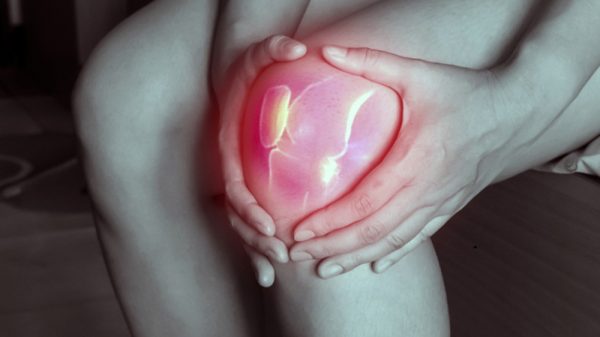Hip replacement surgery is a highly invasive surgery that is common among elderly adults. Successful recovery after surgery is vital to longevity and independence. Recovering from such an intensive surgery is tough, but as an older adult, it can be even tougher. What is the best way to support hip surgery recovery for older adults? Keep reading to find out the best strategies for supporting a quick and complete hip replacement recovery.
Reasons for Hip Replacement Surgery
Hip replacement surgery is one of the most common surgeries among the elderly population. This is because older adults tend to be more prone to arthritis. Several types of bone and cartilage conditions can lead to the breakdown of the hip joint.
- Rheumatoid arthritis: This type of arthritis is an inflammatory condition caused by a hypersensitive and reactive immune system. The inflammation and reactivity cause the degradation of bone and cartilage in joints. Rheumatoid arthritis causes joint pain and joint deformities.
- Injury-induced arthritis: Repetitive injury to a certain area of the body can result in the degradation of cartilage. Cartilage serves as a cushion between the ball-and-socket hip joint. When this cushion wears away over time, the bones rub against one another, creating painful friction and inducing further damage. Osteoarthritis is included in this category since it refers to the slow breakdown of tissue over time with normal use.
- Osteonecrosis: This condition describes limited blood flow to a joint, such as the hip joint. Inhibited blood flow may result from injury or age-related physical changes. When an area of the body doesn’t receive adequate blood flow, it doesn’t receive enough oxygen or nutrients to remain functional. As a result of limited blood flow, the hip joint will weaken and decay, leading to severe pain and loss of function of the joint.
Before suggesting a hip replacement surgery, your physician will administer non-surgical treatments. However, if you experience chronic hip pain that doesn’t respond to medications and you are experiencing severe restrictions in your daily activities and movements, you may become a candidate for hip replacement surgery.
To evaluate whether a hip replacement is right for you, your surgeon will examine your medical history and use medical imaging like x-rays and MRIs to get a better feel of the hip joint damage. You will also need to undergo pre-operative testing to make sure your liver, kidneys, and heart are strong enough to undergo surgery.
Potential Complications
As with any surgery, undergoing a hip replacement comes with potential risks and complications. Keep in mind that you can lower the risk of several post-surgery complications with proper recovery and follow-up care.
- Infection at the surgical site: As with all procedures, surgical wounds can lead to infection. Antibiotics and proper post-surgery care can help reduce the risk of infection.
- Dislocation of the prosthetic joint: Dislocation occurs when the prosthetic joint pops out of the socket. This complication usually occurs within 12 weeks of the surgery, since tissues surrounding the joint has not yet completely formed.
- Nerve damage: Nerve damage in the sciatic or femoral nerves is possible but rare complications of surgery.
- Hip pain: Sometimes, a hip replacement is not successful at relieving pain experienced prior to surgery.
- Uneven leg length: The placement of prosthetic joints may impact leg length and result in asymmetrical leg lengths.
- Bone fractures: Bone that is in contact with the prosthetic may experience fractures as a result of increased pressure. Many bone fractures heal on their own, though some may require further surgery.
Hip Replacement Surgery: What to Expect
A hip replacement surgery entails replacing the hip joint with a prosthetic. This joint is a ball-and-socket configuration where the femur or thighbone fits together with the pelvis. The hip joint is essential for maintaining balance and controlling movement while walking. Hip replacement procedures are also referred to as hip arthroplasty, which describes replacing and restructuring the entire joint.
Hip surgery may be categorized as a partial hip replacement surgery or total hip replacement surgery. As the names suggest, a partial hip surgery entails replacing one joint, while a total hip surgery entails replacing both joints.
Your hip replacement surgery will be conducted by an orthopedic surgeon who specializes in hip joint replacements. The surgical procedure may take up to four hours in the operating room, though it could also take as little as two hours. The operating time depends on your specific case.
Hip Replacement Recovery Timeline
Immediately following your surgery, you will be transferred to a recovery room and your status will be monitored for several hours to ensure that you’re responding to the surgery well. Health care workers will administer antibiotics and pain medication to help prevent infection and manage discomfort. You will most likely be discharged from the hospital on the day of surgery.
In the weeks and months following surgery, you will work with a physical therapist to regain your strength and function in the hip joint. Depending on your individual case and your specific needs, your physician may also recommend that you enter a rehab facility to further support healing. You will also attend follow-up appointments, allowing your orthopedic surgeon to monitor your progress. Your surgeon may want to take x-rays of your new hip to make sure that you are healing as expected.
Most hip replacement patients will find that within three months, they will have regained enough function in your hip to resume most daily activities. As your recovery progresses, you will experience less pain and discomfort. Hip replacement recovery time can take up to one year to reach full strange and range of motion in the new hip joint and engage in all normal activities. Ultimately, your new hip will allow you to engage in normal activities, pain-free.
Tips for Supporting Hip Replacement Recovery Process
Below we’ve compiled the best ways to support a full recovery from hip replacement surgery.
1. Surround Yourself with Support
Keep in mind that a hip replacement is an invasive surgery. If you live on your own, ask a friend or family member to help you get groceries in the house and bring meals sometimes.
Before heading into surgery, work with a friend or family member to make sure your home is set-up to accommodate surgery recovery. Maybe this means making snacks accessible on the counter and setting up a bed to sleep downstairs, so you don’t need to climb upstairs.
2. Increase Blood Flow
Soon after your surgery, you’ll want to begin moving around as much as you are able. Usually, you’ll be encouraged to do gentle movements within a day following your surgery. Moving around soon after surgery is crucial for preventing blood clots. When you remain too still, blood begins to pool, which raises the risk of clotting.
You will likely also be advised to continue wearing compression socks, which enhance circulation in the lower extremities. To further lower the risk of blood clotting, your physician may prescribe blood-thinning medication such as Warfarin.
3. Lose Weight If Needed
Excess weight can impair your body’s normal function and healing processes. Being overweight increases your chances of developing post-surgery infections. Plus, carrying excess weight puts pressure on your new hip joint, which could raise the risk of re-injury.
4. Avoid Smoking and Drinking Alcohol
Smoking and drinking interferes with healthy biological functioning and may slow down your recovery time. Smoking contributes to high blood pressure and may exacerbate post-surgery complications, such as infection.
Alcohol has been shown to weaken hip bones and contribute to arthritis in the first place. In fact, alcohol causes systemic inflammation, contributing to a host of inflammatory diseases like arthritis and fatty liver disease. To protect your new hip and promote a full recovery, it’s best to steer clear of alcohol. If you decide to drink alcohol, do so in moderation.
5. Participate in All Physical Therapy Exercises
Physical therapy is likely to begin in the 24 hours following surgery. Getting the body moving as soon as possible after surgery is important for preventing stiffness. Flexible ligaments, muscles, and tendons surrounding the new hip join are vital for taking pressure off of the replaced joint and lowering the risk of injury later. Muscle strength is another vital part of supporting hip replacement recovery.
Complying with physical therapy exercises and following the guidelines for movement that your physical therapist sets for you are critical for making a full recovery. Your physical therapist will also guide you in suggesting which positions to avoid to lower the risk of dislocation.
Immobility for a long period of time following surgery worsens the growth of scar tissue, which contributes to inflexibility and loss of function.
6. Lead an Active Lifestyle After Recovery
Maintaining muscle mass and strength after a hip replacement surgery is vital for ensuring long term success. Engage in walking, swimming, and other low-impact activities that also help maintain lean muscle tissue. For older adults, in particular, activity is vital to supporting recovery and promoting the long-term success of a hip replacement. As we get older, each decade that passes is associated with a natural decrease in muscle mass, a process called sarcopenia.
Muscle mass is not only important for strength, but it is directly important for supporting the immune system. Fighting against the natural decline in muscle helps older adults maintain strength, recover more quickly, and decrease the risk of injury. Having strong muscle surrounding the hip joint also helps prevent dislocation and promote the longevity of your new hip joint.
However, as is the case when recovering from other joint surgeries such as knee replacement procedures, it’s important to avoid high-impact sports that may damage your new hip over time. High-impact sports to avoid include running, jumping, heavy weightlifting, and sports like basketball.
7. Follow a Healthy Diet
A healthy diet is a vital part of the recovery process and particularly important for older adults whose appetites naturally decrease with age. Older adults must be more vigilant in ensuring that they eat adequate amounts of all food groups to support a full recovery.
- Eating enough calories: When recovering from major surgery, the average person must make sure they consume enough calories to support growth and repair. Elderly adults must take even more precautions to make sure they’re eating an adequate supply of calories. One strategy for making sure you consume enough calories is by eating small meals throughout the day and supplementing meals with a high-protein, high-calorie shake.
- Protein: Eating enough protein helps counter muscle wasting that elderly adults experience and supports a full recovery from major procedures, such as hip replacement surgery. Beyond simply eating enough grams of protein per day, ensuring the intake of optimal ratios of essential amino acids each day is vital for immune system function and successful recovery. Optimal ratios of essential amino acids are necessary for building muscle and supportive tissues surrounding your new hip. Animal sources of protein such as lean meats and low-fat dairy provide all essential amino acids in optimal ratios. Plant-based proteins can also provide all essential amino acids but must be combined throughout the day. For example, tofu, brown rice, black beans, and walnuts are good sources of protein and provide all essential amino acids when combined.
- Omega-3 fatty acids: These fats are healthy polyunsaturated fats that are crucial for supporting the short-term recovery process as well as long-term longevity. Omega-3 fatty acids support immune system function and lower inflammation, both helping your body repair after surgery and helping prevent the return of inflammatory conditions like arthritis.
- Vitamins, minerals, and antioxidants: Micronutrients are necessary to quell inflammation and oxidative stress, while also making sure that your new hip joint makes a full and successful recovery. You can get micronutrients from plant-based whole foods like fruits, veggies, whole grains, nuts, seeds, and beans.
- Avoid inflammatory foods: During the recovery process and beyond, it’s a good idea to avoid refined grains, added sugars, saturated fat, trans fat, and preservatives. These foods lead to inflammation and can worsen conditions like arthritis, leading to re-injury of the hip.
8. Supplement When Needed
Especially for elderly individuals who have undergone surgery, supplementation for essential nutrients is a vital piece of the recovery puzzle. Since many older adults experience sarcopenia, have a low appetite, and may not eat the variety of foods they need for a full recovery, supplements may be extremely helpful. Always choose high-quality supplements and check with your physician to make sure that your supplements support your health.
- Omega-3 fatty acids: Supplementing with concentrated omega-3 fatty acids is a good strategy for giving your body a big dose of anti-inflammatory compounds. It can be difficult to consume ideal amounts of fish, nuts, and seeds to get the benefit you need. A high-quality fish oil supplement reduces inflammation associated with immune system reactivity and inflammation that leads to arthritis.
- Vitamin D and calcium: Elderly adults are particularly prone to weakened bones, bone fractures, and weakness. Vitamin D and calcium fight against age-related decline in bone density and weakness. Sunlight and fatty fish provide lots of vitamin D, but we rarely get enough sun exposure or eat enough fish to get ideal amounts of vitamin D. Supplementing is the best way to make sure you’re getting the vitamin D and calcium you need to support recovery.
- Essential amino acids supplement: An essential amino acid supplement is a highly effective way to make sure you’re getting ideal ratios of essential amino acids to support the growth and strength of tendons, ligaments, and muscles surrounding the hip joint. An essential amino acid supplement also circumvents the digestive step of having to breakdown whole protein particles into individual amino acids. As a result, amino acids in this supplement form are more bioavailable to support healing and recovery. Plus, high-quality essential amino acid supplements are very palatable and can be added to shakes, smoothies, coffee, juice, soup, and oatmeal.
- Multivitamin: In order to get the breadth of vitamins your body requires to promote healing form, taking a daily multivitamin can help fill in places in your diet that might be lacking in essential nutrients
9. Drink Plenty of Water
Make sure you’re staying hydrated on a daily basis. Drinking lots of water increases your blood volume. In turn, this allows for healthier blood flow, allowing the delivery of oxygen and nutrients to the healing hip joint.
Supporting Hip Replacement Recovery: Conclusion
Hip replacement surgery recovery can be an extremely long process if proper steps are not taken to ensure complete healing and avoid potential complications. Your diet, lifestyle, physical therapy exercises, and adherence to post-surgery suggestions are vital for preventing complications. Taking good care of yourself after surgery increases the likelihood of a successful hip replacement surgery that ultimately increases your quality of life.























